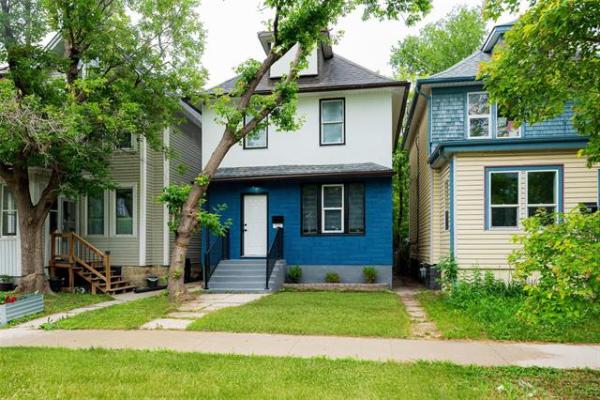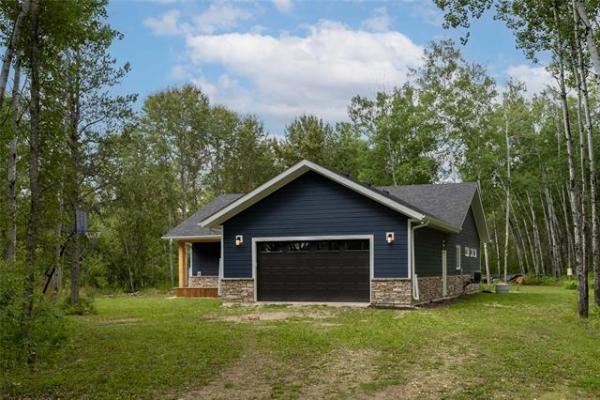QUESTION: My Wolseley home was built in the 1920s, and my basement has gone through some heaving.
Now I'm faced with removing the cracked basement slab and replacing it. I have read similar articles to yours, in regards to this type of project, and I think I can just isolate one area and replace the damaged concrete. While I'm at it, I was thinking of replacing the cast iron plumbing underneath the slab as well. My goal is to finish the basement with a half bath. I've never had an issue with moisture or sewer backup, but I will also be installing a sump pump during the project. But, before I embark on such a journey, there are a couple things that I am concerned about.
When removing the slab, and whatever else that may lay underneath, I'm worried about structural issues. I certainly don't want to tax the strength of my foundation by removing any support. My foundation walls have no visible horizontal cracks, just some thin vertical ones that run from my basement and I believe the walls are around 16 inches thick.
Also, after I remove the slab, how much crushed stone is required before I pour new concrete and how thick must the concrete slab be? I've heard of some basements being finished with only a vapour barrier and sub-floor over either dirt or crushed stone. Is this even an option?
Many, many thanks in advance for your time and most appreciated expertise.
Regards, Wyeth Krauchi
ANSWER: Removing and replacing a basement floor slab is a difficult and very messy project, which may be beyond your skill set as a home handyman.
A partial removal, as you suggest, will be much simpler but may not be sufficient for the plumbing upgrades you desire.
I am a little confused by your request as to the amount of your damaged basement floor slab you are planning on removing. In one sentence you state you will only remove a portion of the floor, but you also desire to install a bathroom, sump pit and pump, and replace the older cast iron drains beneath the slab. All of these items are not necessarily possible by only removing a small section of the concrete. You are further muddying the waters with your questions about an air/vapour barrier below the new concrete. That would be very desirable, but only really effective if most of the older floor is removed. Despite these discrepancies, I will endeavour to provide whatever insight I can.
Your first concern with possible effects on the foundation may only be valid if you are planning on removing most or all of the basement floor slab. The concrete floor does provide a structural function in preventing inward movement of the bottom of the foundation walls, due to excess soil pressure. Since your slab is already damaged and heaving, some of this function may be compromised, but it has to be severely buckled to lose all of this function. By removing the entire slab, you will be subjecting the foundation to the possibility of cracking or inward bowing, but that would depend largely on the amount of time the slab is missing and the amount of rainfall. Removing and replacing a few small sections of the floor may only serve to improve the strength and help prevent further problems of this nature.
The answer to your last question about the possibility of removing the entire floor and leaving only stone and a polyethylene air/vapour barrier should be common sense. Firstly, my previous concern about inward foundation movement would be multiplied enormously. Secondly, the thin plastic sheathing installed over the soil or stone would easily become damaged, over time, and rendered all but ineffective in preventing moisture or soil gas intrusion. It would also allow moisture to be trapped beneath, with potential for mould growth. Finally, how would you have a practical bathroom in a basement without a proper floor for the base? If you are talking about only removing small portions of the concrete, patching these openings with concrete after your upgrades should not be that difficult, even for a do-it-yourself-er.
It is admirable to endeavour to repair your damaged concrete basement floor slab, especially in an effort to upgrade older plumbing drains and protect your home from sewer back-up with a backwater valve, sump pit and pump. Unfortunately, this type of work, especially replacing the old drains and installation of the rough-in for the new bathroom, is very specialized work. I would not attempt this, unless you have extensive expertise in plumbing. The portion of the work that you may be able to tackle is breaking up and hauling away the old concrete and clay soil. Filling in the voids around the new drains and sump with pea gravel or smooth stone, would also fall under this category. Finally, mixing, pouring and finishing four or five inches of new concrete where the old damaged floor is removed may also be within your power, to keep costs down and satisfy your desire to be involved in the renovation.
While it is always a good idea to ask the types of questions you have posed before embarking on any renovation, the fact these have to be asked should alert you to the likelihood you are in over your head. I would initially consult a licensed plumber to come to your home and ensure your plans are practical or even possible before embarking on removing sections of your basement floor. Then you can decide how to proceed and how much of the floor removal and repair you are willing and capable of tackling yourself.
Ari Marantz is the owner of Trained Eye Home Inspection Ltd. and the past president of the Canadian Association of Home and Property Inspectors -- Manitoba (cahpi.mb.ca). Questions can be emailed to trainedeye@iname.com. Marantz can be reached at 204-291-5358. Check out his website at
trainedeye.ca.



